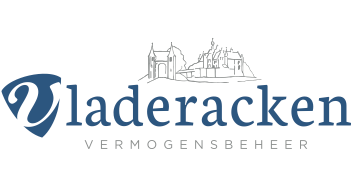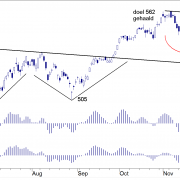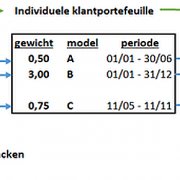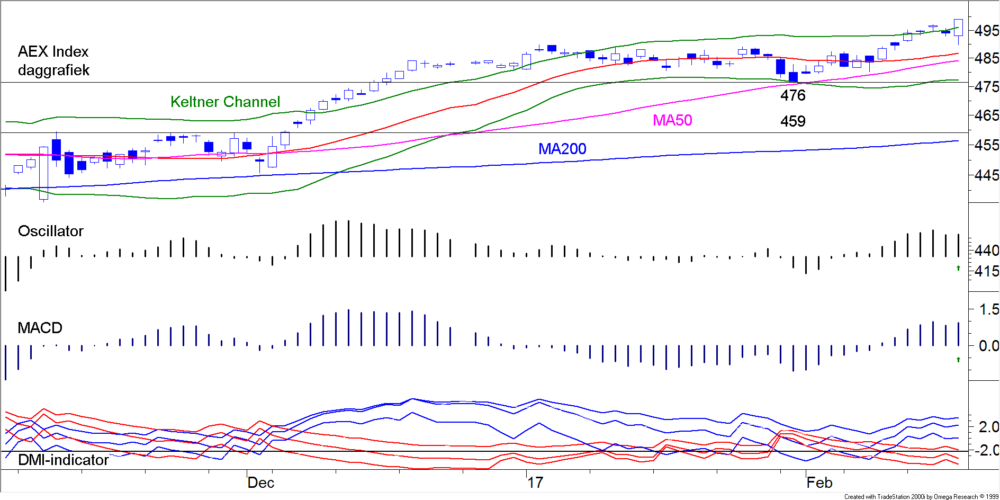MiFID II and LEI in Europe
No more securities transactions without LEI as of 3 January 2018!
(The Hague, 17 February 2017)
Introduction
In the fight against insider tradingIllegale beurshandel op basis van informatie die niet publiek is. Copyright Vladeracken and market abuse, the European regulators, including the Dutch AFM, have introduced a new set of rules through the ESMA, which are known under the abbreviation MiFID IIMarkets and Financial Instruments Directive II. Een voorlopig akkoord over strengere regels voor de derivatenmarkt. Er moet nog overeenstemming bereikt worden met het Europese parlement (juni 2013). Het doel is om de over-the-counter markt te reguleren. Copyright Vladeracken. MiFID stands for Markets in Financial Instruments Directive and ESMA stands for European Securities and Markets Authority. MiFID I dates back to 2004, MiFID IIMarkets and Financial Instruments Directive II. Een voorlopig akkoord over strengere regels voor de derivatenmarkt. Er moet nog overeenstemming bereikt worden met het Europese parlement (juni 2013). Het doel is om de over-the-counter markt te reguleren. Copyright Vladeracken was decided upon in 2014. The practical application of MiFID IIMarkets and Financial Instruments Directive II. Een voorlopig akkoord over strengere regels voor de derivatenmarkt. Er moet nog overeenstemming bereikt worden met het Europese parlement (juni 2013). Het doel is om de over-the-counter markt te reguleren. Copyright Vladeracken currently finds its way into the national laws and regulations in the Netherlands and all other European countries. Most of the rules that are laid down in this new package are important for professional financial service providers. Consumers will have little bother here other than that the consumer is going to be even better informed about costs and risks of the products that are offered to him. But one thing is going to have a direct impact on consumers, especially when he or she directly or through a legal entity carries out securities transactions, in short anyone who invests or allows others to invest on his or her behalf. The rules for this part of MiFID IIMarkets and Financial Instruments Directive II. Een voorlopig akkoord over strengere regels voor de derivatenmarkt. Er moet nog overeenstemming bereikt worden met het Europese parlement (juni 2013). Het doel is om de over-the-counter markt te reguleren. Copyright Vladeracken are set out in the chapter on “Transaction Reporting”.
Combating market abuse
The new regulations are setup by the regulators to combat market abuse. Regulators are looking for transaction information that, using “big data” techniques, can be analyzed to find out if there are parties who try to make use of inside information, money laundering through securities transactions or securities markets and in other ways want to abuse financial markets. To be able to get this information, all financial institutions involved in carrying out securities transactions (and which a WFT-licensed), are confronted with the obligation to report all securities transactions carried out under their responsibility on a daily basis to their responsible regulator (in the Netherlands the AFM). The information is to be delivered in a prescribed format. The information, that should be provided, concerns, in addition to information on the transaction itself (is it a buy or sell, what is the security traded, what is the underlying value (if any), at what price, quantity etc.) also information that identifies the parties involved such as: the person or legal entity on who’s account the transaction is executed, the party that initiated the transaction, and the party that has actually executed the transaction, all are to be identified for each securities transaction.
Example
Imagine that your asset manager in Netherlands buys 100 shares of Royal Dutch for your account. Then that asset manager needs to supply data to the AFM on the parties involved in this transaction. These are:
• the analyst of the asset manager who has decided that Royal Dutch must be purchased;
• the person at the asset manager that enters the transaction in the order system of the depository bank for the order to be carried out;
• the broker who in fact executes the order;
• the owner of the account, yourself, for which the shares are purchased.
How is everyone to be identified?
The identification of all parties involved takes place by means of a number. In the case of individuals a passport number or number of a national identification card (ID) needs to be provided. Most financial parties in Netherlands have these numbers already because in Netherlands one is required to identify a private client before doing business with or on behalf of him or her and that happens by asking for a copy of a passport or a copy of an identity document. The numbers on a driver’s license are not sufficient! But for legal entities one has invented something new. Companies, foundations, associations, Church societies etc. should all come up with an individual number. And the number generally provided in the Netherlands by the Chamber of Commerce is not acceptable. No, you need a so-called LEI-number.
LEI-number
LEI stands for Legal Entity Identification(-number). This is a number system that has been created in Europe that is valid all through Europe and that is unique for every single legal entity. It is granted once and then remains eternally attached to the institution concerned. In the Netherlands this number can be requested at the Chamber of Commerce. It costs € 181.50 (including VAT). The number is sent to you within 10 business days once payment has been made and once you have entered the application (via internet). The form can be found through the link associated with this sentence.
PLEASE NOTE, CONSEQUENCES!
No party will be allowed to carry out any securities transaction on your behalf without providing this number (at least if the parties involved want to abide by the law by that time)! So if you have a BV and you are investing money within that BV on the stock market, then you should request this number because without this number from that day forward you can no longer buy or sell any securities in your portfolio!
Cut costs
Once a number is acquired and handed to your asset manager, bank or other financial service provider, then this number is final and you do not have to maintain the registration of the number at the Chamber of Commerce any longer. And here is a typical snag from the Chamber of Commerce. Because they will not tell you that the request is sufficient and that maintenance of the number in their registers is not needed. On the contrary, if you, after you have received the number, do not stop the maintenance subscription, then the Chamber of Commerce will charge from that moment on, on an annual basis, € 121.0 (incl. VAT), for so-called “maintenance”. But if you stop the maintenance, the Chamber of Commerce will add in their LEI-register the classification “lapsed”. But for the regulators this does not impede the validity of this number. The Chamber of Commerce has a form to end this maintenance, the link to that form you will also find linked to this sentence.
Time frame
The application of the LEI-number should be done as soon as possible, so that you have it available as soon as a bank, asset manager or other financial service provider asks for it. Stopping the “maintenance contract” at the Chamber of Commerce needs to be done before the end of 2017, otherwise you will receive a bill in 2018 and every year afterwards.
Matching and big-data
As in every link of the process with regards to a securities transaction in Europe identical identifying numbers are added, supervisors can match all transactions across Europe. Today’s computing power of and “big-data” analysis techniques make it possible to automate this process on a daily basis. It is important that the numbers do not change. Someone who has two passports can essentially, through two different identifying numbers, frustrate the matching process because nowhere these two passport numbers are linked. Also if your passport expires and you apply for a new passport, its number changes. Financial services companies for this reason do not have the obligation to change the identifying number each time a new passport is handed to an individual. This is also the reason why LEI-numbers, once issued, no longer need to be maintained. In order to be able to match transactions the regulator prefers the situation that a once granted number never changes.
Information holding period
The transaction reporting rules also impose a 5-year retention period on anyone who must report on securities transactions. This retention period starts building up from 3 January 2018. How this relates to the civil code the financial supervisors have left for others to decide. But you should know that a securities transaction executed on 4 January 2018 will only disappear from the books on January 5, 2023.
Conclusion
If you invest through a legal entity, ask a LEI-number at the Chamber of Commerce but remember to stop the maintenance for this number in the course of this year, once you have received the number. You can bet that your bank and/or investment manager is going to ask you for this number in the course of this year.
The Hague, 17 February 2017
Gijsbrecht K. van Dommelen
Vladeracken Vermogensbeheer
KVK-url’s:
• Application form LEI: https://www.kvk.nl/inschrijven-en-wijzigen/inschrijven-bij-de-kamer-van-koophandel/legal-entity-identifier-lei/vraag-een-pre-lei-aan/
• Form to stop maintenance LEI: https://www.kvk.nl/inschrijven-en-wijzigen/inschrijven-bij-de-kamer-van-koophandel/legal-entity-identifier-lei/beeindiging-pre-lei-registratie/
Disclaimer
The author is responsible for the investment policy of Vladeracken BV, an asset manager with an AFM license. To maintain this license Vladeracken as such needs to follow legislation and rules arising from MiFID IIMarkets and Financial Instruments Directive II. Een voorlopig akkoord over strengere regels voor de derivatenmarkt. Er moet nog overeenstemming bereikt worden met het Europese parlement (juni 2013). Het doel is om de over-the-counter markt te reguleren.
Copyright Vladeracken. The author and Vladeracken, however, do not guarantee the completeness and the accuracy of the information in this article in the sense that the reader of the above remains solely responsible for the interpretation of the rules by MiFID IIMarkets and Financial Instruments Directive II. Een voorlopig akkoord over strengere regels voor de derivatenmarkt. Er moet nog overeenstemming bereikt worden met het Europese parlement (juni 2013). Het doel is om de over-the-counter markt te reguleren.
Copyright Vladeracken and its consequences. In this context, the author and Vladeracken BV reject all responsibility for the content of this article.






Plaats een Reactie
Meepraten?Draag gerust bij!